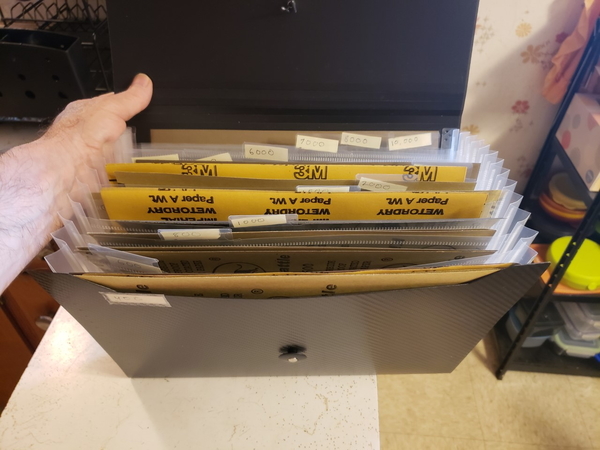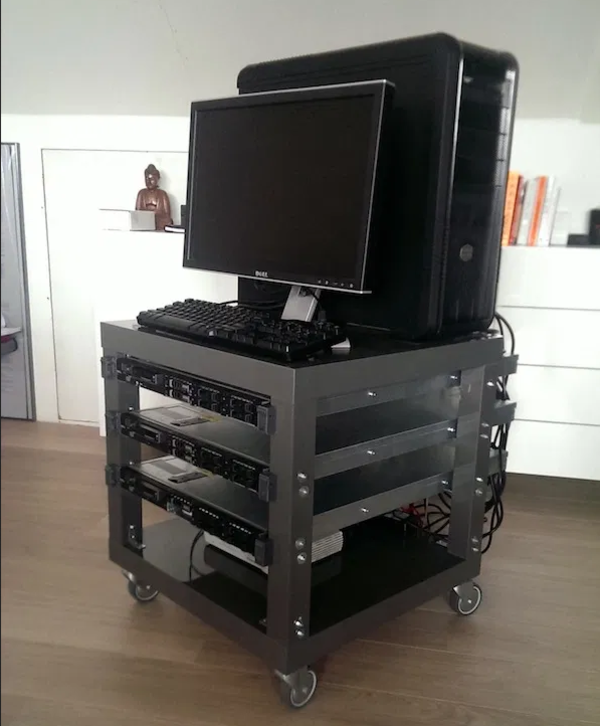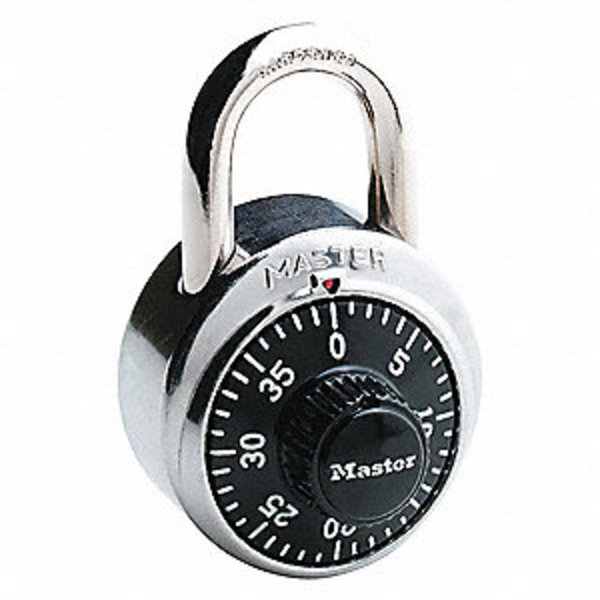Using Paper Towel and Wood Glue to Seal Up Molds for Casting
Gareth's Tips, Tools, and Shop Tales - Issue #59
I want to start collecting maker jargon and slang. (In a previous life, I co-created the “Jargon Watch” column at Wired.) If you have shop and tool-related slang, please share. I’ll be periodically running some of these submissions here.
***
Like one of the tips in this issue? Share it on social media and link back here. It really helps in spreading the word. Thanks!
Using Paper Towel and Wood Glue to Seal Up Molds for Casting

David Lynch dropping the science!
I’ve been loving David Lynch’s channel on YouTube, with his daily weather reports and project updates. In this video, he shows off a wooden tripod-mountable iPhone holder he made along with a mold for casting some pieces for a sculpture. He shares a great tip about the mold. To close up a block mold for casting (so that the resin doesn’t leak out), wrap it with paper towel soaked in wood glue. I’ve heard of using plaster-impregnated gauze for this, but paper towel and glue is cheaper and more readily available.
Making Custom Silicone Workbench Mats
Made to your specs.
In this video on I Like to Make Stuff, Bob runs through the steps for how to design, mold, and cast your own custom silicone mat. There are obviously lots of these mats on the market, but making your own allows you to customize one to your specific needs. In the video, he shares a useful resource. It’s a ruler vector file generator that lets you create custom rulers. He creates a ruler in reverse, laser-cuts it, and uses it as part of the mold for his mat.
Storing Sandpaper in an Accordion Folder

Grit organized.
Reader David L sent me this great little idea. “I got disgusted with having more than a dozen different grits of sandpaper in a big pile, so I bought this 13-pocket accordion file at Malwart for about $5. I wish I’d done this years ago!”
The Lack Rack

Stack that crap with a Lack rack hack.
By way of Boing Boing comes this Ikea hack. People are turning the ten dollar LACK side table into a server rack. As you can see above, you can even add casters and make it into a full-function computer/server workstation.
Creating a Power-Loss Indictor for Your Freezer
Here’s a tip from my book that I thought would be good to resurface during hurricane season.
To help determine whether your freezer thawed (or partially thawed) during a power outage, freeze a cup of water, place a quarter on top of it, and place it in the freezer. After a storm, when the power is restored, check the cup. If the quarter is unmoved, the freezer is safe. If it’s partially submerged, you had some thawing, but the freezer contents are likely still safe. If the quarter is at the bot- tom, you had a significant failure and the freezer’s contents are likely spoiled. By the way, if you do end up with a fridge or freezer full of spoiled food, check your homeowner’s insurance policy. Spoiled food is usually covered (if not the result of flooding).
Writing the Combination Directly onto a Lock?

“Hey look, this numbskull wrote the combo right on the lock!”
Here’s a great little trick for remembering a combo lock. Pick a secret number that you know you won’t forget. Let’s say it’s 8. And let’s say your lock combination is actually 7+26+30. You add 8 to those numbers and that’s what you write down (15+34+38). This is “secure” enough that, under many locking situations, you can even write the inflated number directly onto the lock itself. [Via Family Handyman]
Maker’s Muse

Folding ruler dome. Brilliant!
Last week, we covered Laura Kampf’s greenhouse dome, made with metal shipping bands. Here’s Ellen, from Crafts with Ellen, who used old wooden folding rulers for her struts. These domes are being built as part of Tom Sachs’ I.S.R.U. dome project.
Shop Talk

Everyone needs a few pairs of forceps/hems in their toolbox.
Mike M reminds us of the tool-powers of medical forceps: “A pair of 9″ forceps have been a pretty magical tool for handling tasks too small for my meat hooks. They are great for fishing stuff out of small spaces or holding hot things, especially when a delicate touch is needed.”
***
Tom M writes: “I also love my Swanson Tools Speed Square…Any idea why the notch at the 0-inch line of the speed square? I’ve never figured out the benefit that trades off the downside of preventing me from making a pencil line all the way to the edge of the board.”
This notch is for pivoting the square if you need to swivel it on top of a workpiece (as opposed to the edge). My square came with flash inside this pivot that I had to Dremel out. But yes, it does make a divot in your line if you try and strike a line alone the entire edge.
***
Reader Dave L offers further ideas for removing stripped screws: “Another way to loosen stripped screws is to put a bit of valve grinding compound on the tip of the screwdriver. It contains abrasive particles in oil. You could also carefully grind a slot in the head with with a Dremel emery wheel, but that takes a steady hand. You can then remove it with a slotted screwdriver.”
08/27/20(Gareth’s Tips, Tools, and Shop Tales is published by Cool Tools Lab. To receive the newsletter a week early, sign up here. — editors)









